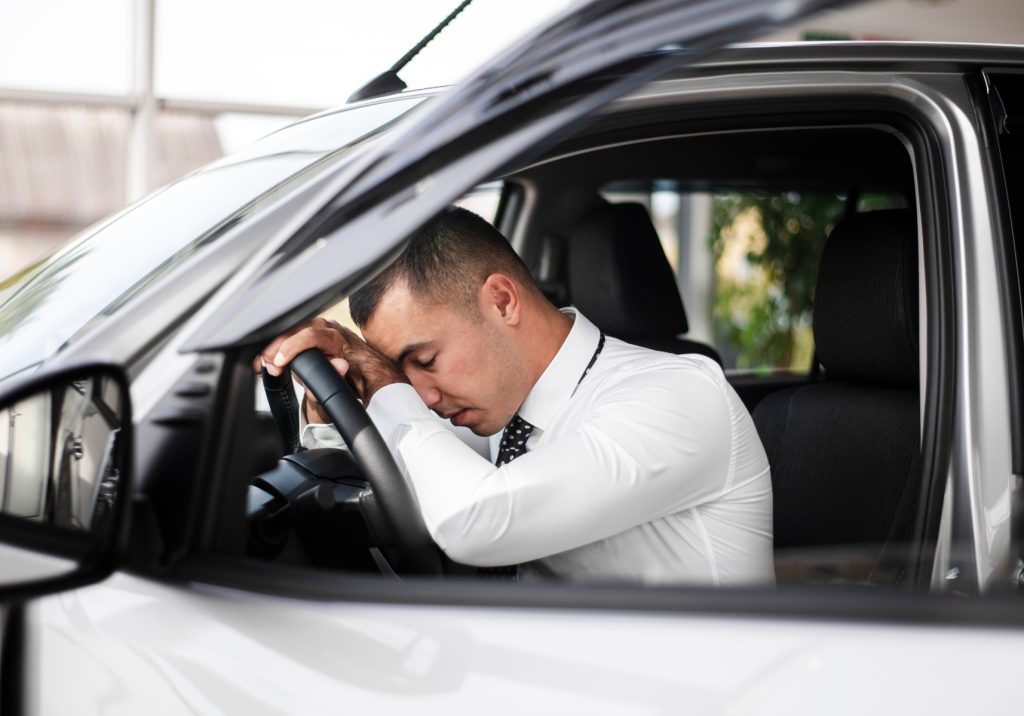For a safer bet, most people avoid buying used cars over five years old, mainly to avoid unwanted breakdowns. Although there is some truth in this, it’s never the end of the world if you can only afford a cheaper used car that is five years and above or if you inherited one.
Among the many tips that have been shared about buying used cars, many recommend purchasing one that is no older than five years old.
Although the car is still considered relatively ‘new,’ the value has depreciated significantly.
Moreover, most banks in Malaysia also have a loan requirement making it eligible for cars below five years old from the year of manufacture.
Nevertheless, most buyers turned to used cars for cheaper pricing, and sometimes the only ones that we can afford are those with older manufacturing year.
There’s no wrong with that. In fact, it is important to be realistic and get an affordable car rather than living in debt that cannot be paid.
Hence, we will share some car components that you might want to change when buying a cheaper used car that is five years old or above.
Got a used car for cheaper? 5 Items To Change
1. Timing Belt
The timing belt is one of the critical components in a used car. Depending on its condition, it might need to be replaced.
The timing belt is responsible for synchronizing the camshaft and crankshaft, ensuring that the engine’s valves and pistons work harmoniously.
Over time, the timing belt can become worn, cracked, or stretched, which can cause it to slip or break. If this happens, the engine’s valves and pistons can collide, resulting in serious engine damage and costly repairs.
Therefore, replacing the timing belt is a preventative maintenance measure that can help you save some serious money down the road.
The timing belt replacement interval varies depending on the vehicle’s make and model. If you are uncertain, take a look at the owner’s manual that comes together, or even better, go to a trusted car mechanic.
However, generally, the owner should change it every 60,000 to 100,000 miles or every 5-7 years, whichever comes first.
2. Air conditioning Belt
Do you frequently hear people complaining that the air-cond for your used car is not that cool? If so, you might want to consider changing the air conditioner belt.
The air conditioning belt, also known as the A/C belt, drives the compressor that powers the car’s air conditioning system. Over time, the A/C belt can become worn, damaged, or stretched, which can cause it to slip or break.
If this happens, the air conditioning system will stop working correctly, resulting in reduced or no cooling.
A worn or damaged A/C belt can also cause increased wear and tear on the other components of the air conditioning system, such as the compressor.
Which in turn will lead to more significant problems and, yes, you guessed it, more money spent!
Similar to the timing belt, take note to replace it every 60,000 to 100,000 miles or every 5-7 years, whichever comes first.
However, it’s always best to consult the vehicle’s owner’s manual or a trusted mechanic for specific recommendations based on the car’s age and condition. Or just listen to your friend’s complaint and get it checked!
3. Brake Shaft
Now, here’s one that you won’t find easily in modern cars, but in a 5-year-old and above car, it’s one that you should take note of.
Brake systems in cars consist of several components, such as brake pads, brake rotors, brake calipers, and brake lines.
These components can become worn or damaged over time, especially in a used car with unknown maintenance history, and may need to be replaced to ensure that the brakes are working correctly.
After years of use, the brake shaft can be worn or warped, which may cause the brakes not to work optimally.
Therefore, if you are buying a used car for cheap, don’t overlook sending it for some extensive checking.
Anyhow, the interval for brake maintenance varies depending on the vehicle’s make and model.
Basically, it’s recommended to have the brake system inspected and serviced every 10,000 to 15,000 miles or once a year, whichever comes first.
4. Radiator Hose
Most people would overlook this component, the radiator’s hose.
Radiator hoses are an essential component of a car’s cooling system. They carry the coolant from the engine to the radiator, where the heat is dissipated.
Most of the time, people change the radiator liquid and miss out on the hose.
The heater inlet hose and heater outlet hose can possibly crack and bulge, due to the nature of the material.
Aside from that, there is also the possibility of rust at the end of the joiner, which would lead to leaking.
If the radiator hoses are not replaced when worn, they can burst, causing sudden coolant loss and engine overheating, leading to costly repairs.
Therefore, it’s crucial to inspect the radiator hoses regularly and replace them if there are signs of wear, such as cracks, bulges, or soft spots.
5. Spark Plug
Spark plugs are an essential component of a gasoline engine, as they provide the spark that ignites the fuel and air mixture in the engine’s combustion chamber.
Over time, spark plugs can become worn or fouled with deposits, leading to misfires, reduced fuel efficiency, and increased emissions.
In a used car, the condition of the spark plugs may be unknown, and they could be due for replacement.
Replacing the spark plugs in a used car can improve engine performance, fuel efficiency, and emissions. New spark plugs can also help prevent other engine problems, such as rough idling, hesitation, and hard starting.
Buying Cheaper Used Car?
Buying a used car can be risky. Some used cars are poorly maintained or have hidden damages that can have a significant cost in the future.
Hence, we recommend you to look out for the significant ‘NO,’ and you should be able to get a car that is worth your money.
Nevertheless, it’s important to use a car after buying it because there may be hidden problems or issues that were not disclosed by the seller. Or problems that you did not notice during the initial inspection or test drive.
Schedule an appointment with your mechanic to have a closer look. Here are some reasons why it’s important to check a used car after buying it:
- Safety: Checking the car after buying it can help ensure that it’s safe to drive. The brakes, tires, suspension, and steering should all be inspected to make sure they are in good condition.
- Maintenance: Ensure that it’s up-to-date on its routine maintenance, such as oil changes, fluid checks, and filter replacements. Neglected maintenance can cause expensive problems down the road.
- Repairs: Check for any necessary repairs, such as replacing worn-out parts or fixing body damage. Identifying these issues early can prevent them from becoming more serious and expensive.
- Warranty: Identify any issues that may be covered under the warranty. You can also take the chance to address them before the warranty expires.
- Value: Checking the car after buying it can help you assess its true value. For example, hidden problems or issues, you may be able to negotiate a lower price or return the car if necessary.
Also read: Best Budget-Friendly Family Car in Malaysia
Hence, if you can only afford a cheaper used car that is more than 5 years old, look out for these components. With good maintenance and care, we believe it should be able to serve its function well, which is to take you from one destination to another.
Start searching for your very own used car via www.motortrader.com.my


